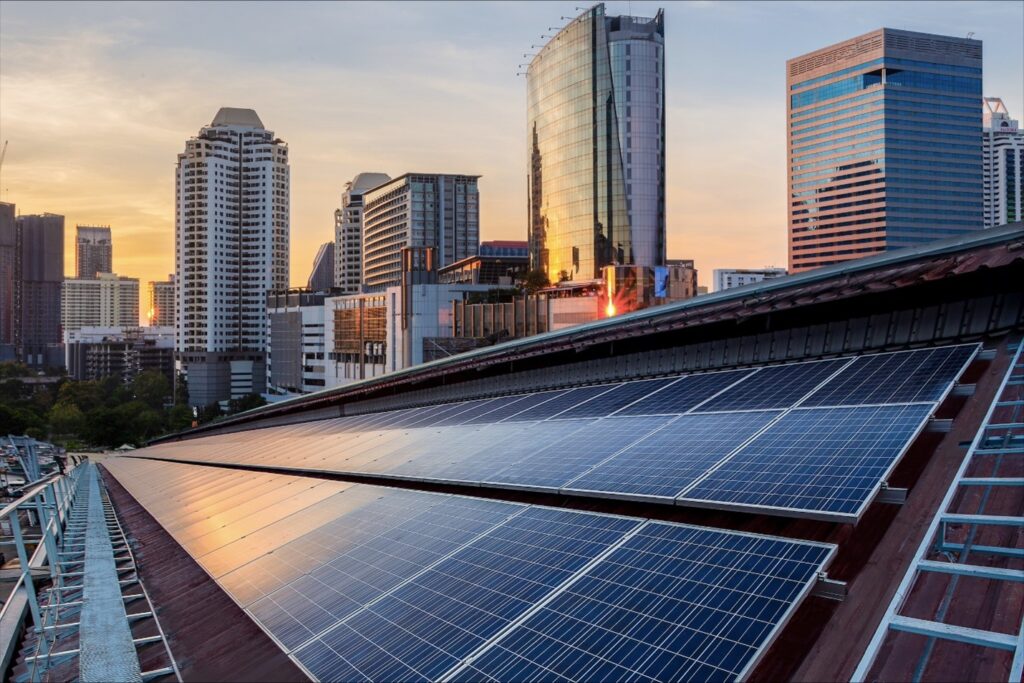
Co-written by:
Rokas Beresniovas, Montgomery County Green Bank
Chris Cucci, Climate First Bank
The recent buzz surrounding America’s $20 billion climate push has sparked widespread interest. However, amidst the headlines, confusion lingers. Let’s dissect the facts. Contrary to some interpretations, this funding doesn’t herald the birth of a new “Green Bank.” Instead, it marks a substantial investment in the nation’s inaugural “Green Bank” Network.
A significant portion of these funds—70%—is earmarked for disadvantaged communities, with an additional 20% allocated for rural areas, leaving the remainder designated for tribal communities.
Just last week, eight community development banks and non-profits were honored with awards. Among them are esteemed organizations such as the Coalition for Green Capital, Power Forward Communities, and others. Collectively, these groups have pledged to leverage $7 in private investment for every $1 of government funding they receive.
Each recipient organization will receive portions of the funding, which they will distribute to sub-awardees, ensuring that the financial support reaches the grassroots level. These funds will be disseminated through local green banks, mission-based non-profits, and community development institutions (CDFIs).
While “Green Banks” represent a relatively new concept, they are not the sole players in climate finance. Numerous CDFIs, non-profit institutions, and emerging conventional banks in the U.S. are actively engaged in furthering this mission. Typically, Green Banks operate as mission-based non-profits, public-private partnerships, or state entities, all dedicated to advancing specific climate goals set by states or municipalities.
Undoubtedly, the $20 billion climate initiative will present both challenges and opportunities. A critical hurdle will be securing the necessary talent to deploy these funds effectively. Additionally, educating communities and collaborating with existing mission-based institutions will be imperative for successful deployment.
Conventional community banks, struggling with dwindling deposits and limited lending opportunities, are poised to benefit from this influx of capital. However, many are hindered by their conservative lending practices and lack of familiarity with climate finance.
In recent years, many community banks have struggled with a higher-than-desired level of commercial real estate loans on their balance sheet. In an effort to reduce the concentration of CRE loans in their asset mix, many are looking for alternatives. Financing green energy for residential and commercial uses can provide this solution. However, many of these smaller banks lack the experience to properly underwrite these types of loans. The organizations that have received grant funds from Greenhouse Gas Reduction Fund (GGRF) have experience lending in these areas or working with lenders who have this experience. Along with connecting community bankers with resources to increase their knowledge around underwriting, these organizations can use GGRF funding to provide credit enhancements to encourage more green lending activity with local banks.
Commercial real estate investors represent another opportunity to leverage this new funding source. Rising interest rates and, in many markets across the U.S., an oversupply of commercial real estate has led to a slowdown in rent growth. Commercial real estate investors are seeking other means to deliver returns on their real estate investments. When rents can’t be increased and interest rates are high, the solution is finding ways to reduce property operating expenses. Green building upgrades include improvements to windows, insulation, doors, LED lighting, low-flow plumbing fixtures, and more. These improvements can reduce the energy consumption of the building, thus reducing the utility expenses needed to support the property. Combine this with rooftop solar and commercial real estate investors are able to enjoy a boost in net operating income by reducing these expenses. In addition to the increased net operating income, there are tax benefits, including depreciation and, in the case of solar, the federal investment tax credit (ITC), which can provide tax credits of 30% or more.
The term “Climate Finance” encompasses a broad spectrum of initiatives, ranging from renewables and energy efficiency to infrastructure resilience. Conventional banks must adapt by broadening their understanding and offerings to accommodate these emerging opportunities.
As funds trickle down to local green bank networks, conventional banks have a unique opportunity to collaborate and capitalize on this momentum. By aligning deposit policies with community banks and engaging in strategic partnerships, they can actively contribute to the climate finance movement.
In the coming years, the climate finance industry is poised for exponential growth. Conventional banks must seize the moment and integrate climate finance into their core operations to remain competitive in this trillion-dollar industry.
Let’s embark on this transformative journey together, building healthier, greener communities for generations to come. The time for action is now. Read more.